
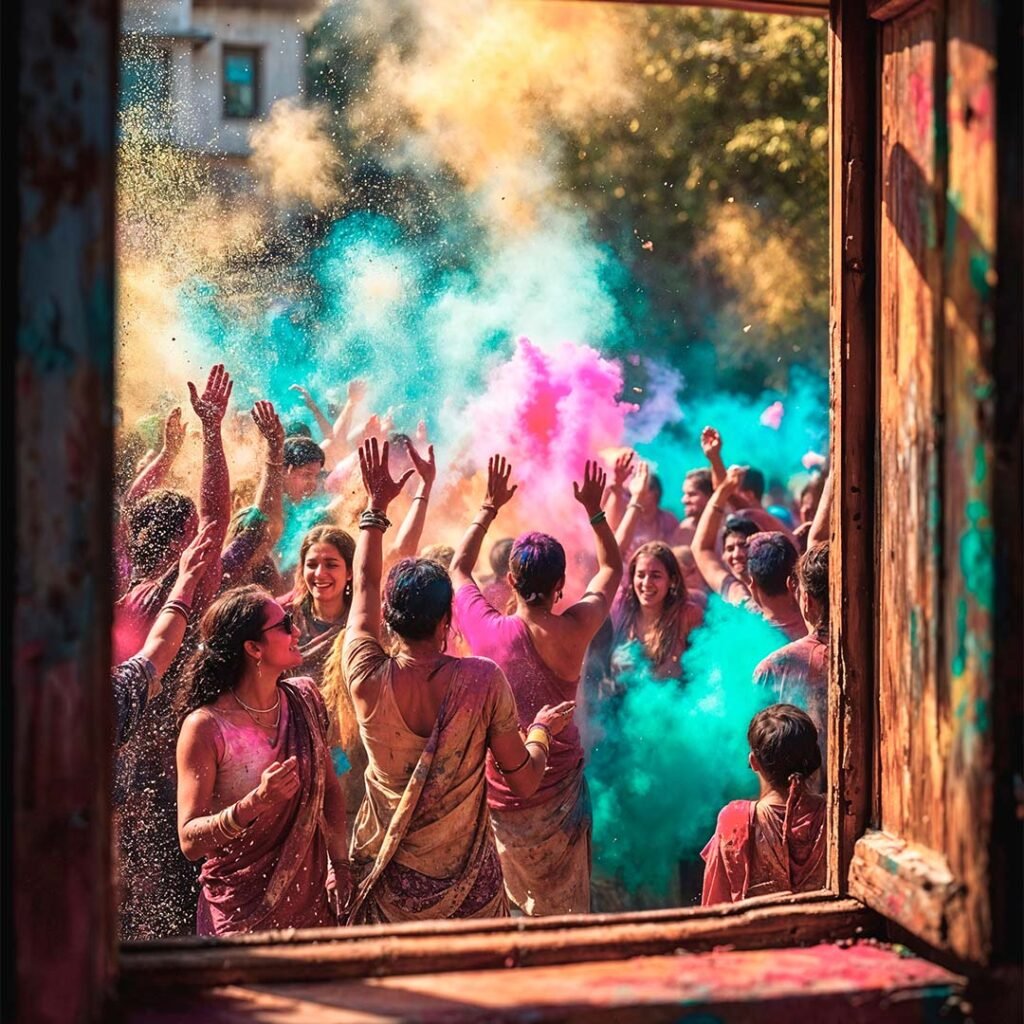
Holi 2025 – The Festival of Colors
Holi, the festival of colors, is one of the most vibrant and joyful festivals in India, symbolizing love, unity, and the victory of good over evil. Celebrated with enthusiasm across the country, it marks the arrival of spring and fills the air with happiness, laughter, and colors.
What is Holi?
Holi is a vibrant Hindu festival celebrated with colors, joy, and togetherness. Known as the “Festival of Colors,” it marks the victory of good over evil and the arrival of spring. The celebrations begin with Holika Dahan, a ritual bonfire symbolizing the burning of negativity. The next day, people play with gulal (colored powders), water, and flowers, spreading happiness and unity. Holi is a time for forgiveness, love, and new beginnings, making it one of the most joyful festivals in India.
History of Holi: The Legend Behind the Festival
Holi has its roots in ancient Hindu mythology and is primarily associated with the legend of Prahlad and Holika. King Hiranyakashipu, who considered himself invincible, was angered by his son Prahlad’s devotion to Lord Vishnu. He sought help from his sister Holika, who had a divine boon to remain unburnt in fire. She tricked Prahlad into sitting in a fire with her, but due to his unwavering devotion, he remained unharmed while Holika was burned to ashes. This event symbolizes the triumph of good over evil and is celebrated as Holika Dahan the night before Holi.
Another significant story associated with Holi is Lord Krishna and Radha’s playful Holi in Vrindavan and Barsana. Krishna, worried about his dark complexion, playfully applied color to Radha’s face, and this tradition has continued as the festival of colors.
Why is Holi Celebrated?
Holi is celebrated to mark the victory of good over evil, the arrival of spring, and the bond of love and togetherness. The festival is rooted in the legend of Prahlad and Holika, where Holika was burned in a fire while Prahlad, a devotee of Lord Vishnu, remained unharmed, symbolizing the triumph of faith and righteousness. Holi is also associated with Lord Krishna and Radha’s playful love, where Krishna applied colors to Radha, giving rise to the tradition of playing with gulal and water. Beyond mythology, Holi signifies the end of winter, the blossoming of nature, and the renewal of relationships, as people come together to forgive, celebrate, and spread joy with colors, music, and festive treats.ra
Braj Ki Holi
Holi in the Braj region (Mathura, Vrindavan, Barsana, and Nandgaon) is legendary and celebrated with immense devotion.
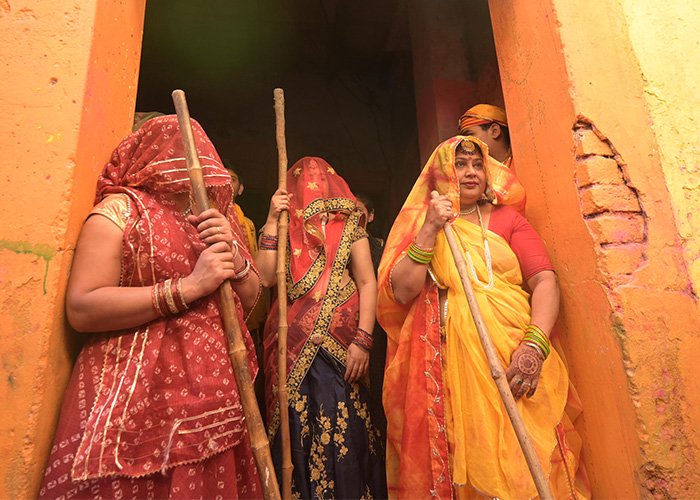
Lathmar Holi (Barsana & Nandgaon)
Women playfully beat men with sticks, recreating the divine play of Radha and Krishna. The men try to shield themselves while singing songs and teasing the women.
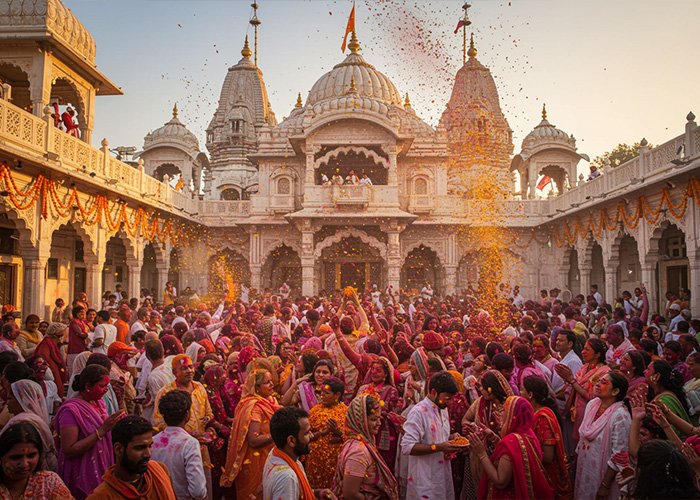
Phoolon Ki Holi (Vrindavan)
Celebrated at Banke Bihari Temple, devotees play Holi with flower petals, creating a divine atmosphere.
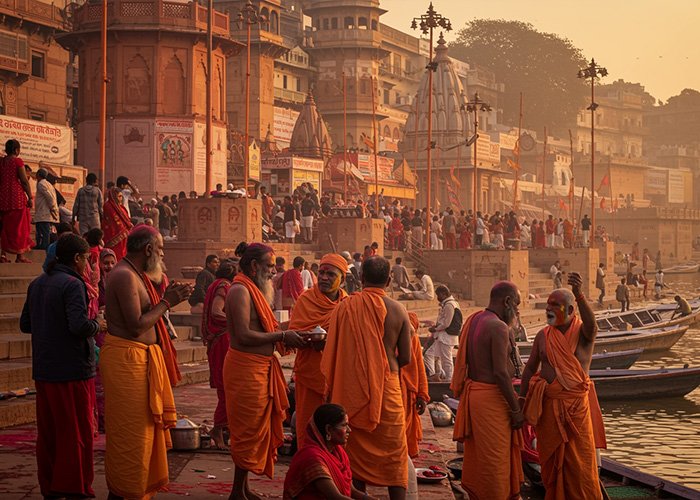
Rangbharni Ekadashi (Mathura & Vrindavan)
Rangbharni Ekadashi in Mathura and Vrindavan is a vibrant festival celebrating colors, devotion, and Lord Krishna’s divine love.
इस वीडियो में हम आपको ले चलेंगे बरसाना और नंदगांव, जहां हर साल राधा-कृष्ण की अनूठी होली खेली जाती है। हमने देखा रंगीली गली की लठमार होली, जहां महिलाएं लाठियों से होली खेलती हैं, और नंदगांव में श्रीकृष्ण और उनके सखाओं की रंगों भरी होली का दिव्य अनुभव किया।
How Holi is Celebrated?
Holi is celebrated with great enthusiasm across India, beginning with Holika Dahan on the night before Holi, where a sacred bonfire is lit to symbolize the victory of good over evil. People gather around the fire, offer grains and sweets, and pray for positivity. The next day, Rangwali Holi fills the air with colors as people apply gulal (colored powders), splash water, and use pichkaris (water guns) to drench each other in vibrant hues. Friends and families come together to dance, sing, and enjoy traditional sweets like gujiya, thandai, and dahi bhalla. In many places, temples and cultural centers host special Holi celebrations with music, folk performances, and devotional songs. The festival is a time of joy, unity, and renewal, marking the arrival of spring and the spirit of togetherness.
How Holi is Celebrated Across India?
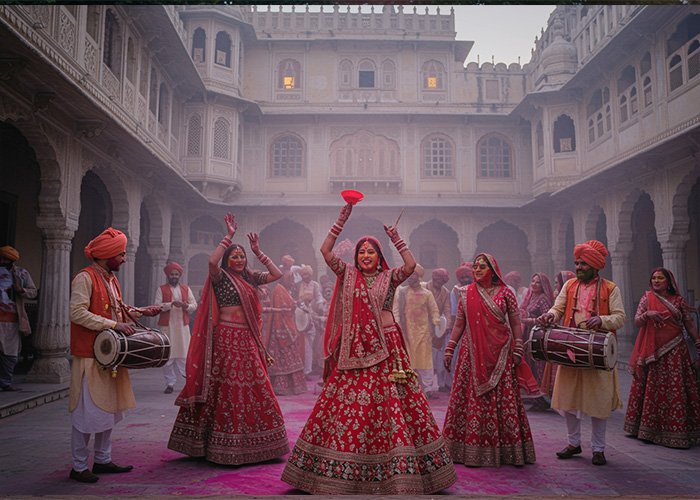
Rajasthan – Royal & Traditional Holi
The Mewar royal family in Udaipur hosts a grand Holika Dahan procession with elephants, horses, and folk dances. Braj Holi in Bharatpur is another major attraction.
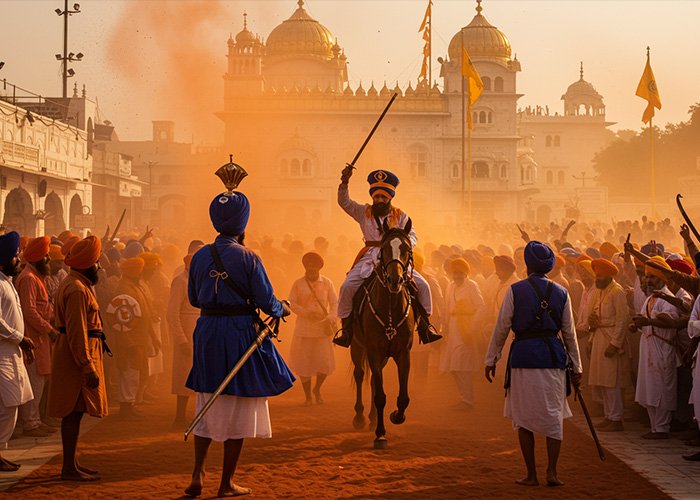
In Anandpur Sahib, Sikhs celebrate Hola Mohalla, showcasing martial arts, horse riding, and mock battles.
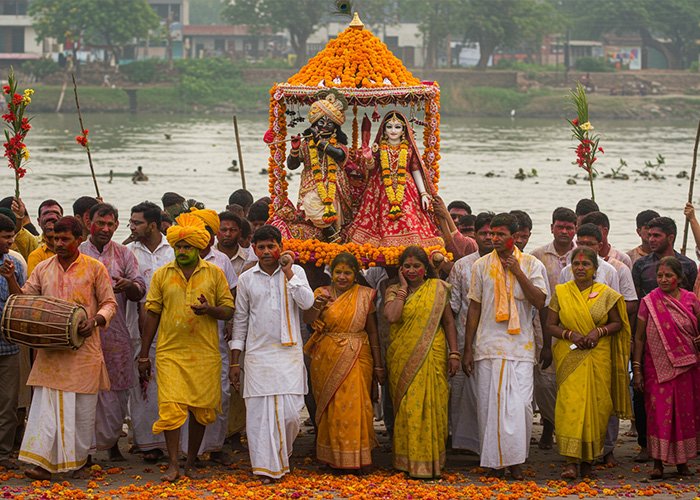
Inspired by Rabindranath Tagore, Dol Jatra in Shantiniketan features cultural performances, poetry, and songs. In West Bengal, people apply abir (dry colors) and sing devotional songs.
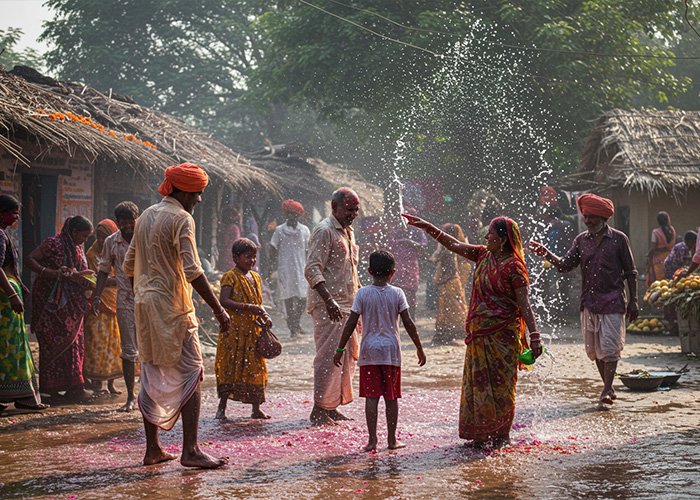
Bihar – Holi with Bhang
Holi in Bihar is incomplete without folk songs, dhol beats, and traditional drinks like bhang thandai.
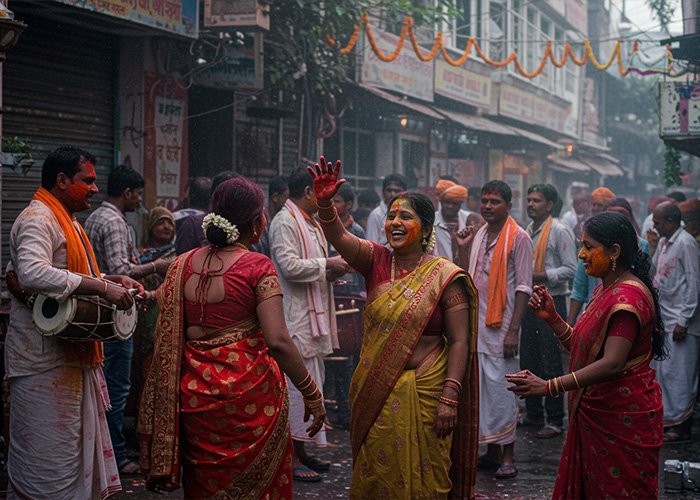
Maharashtra – Rangpanchami & Matki Phod
People celebrate Rangpanchami, where colors are played a few days after Holika Dahan. In Mumbai, men form human pyramids to break a pot of buttermilk, representing Krishna’s love for butter.
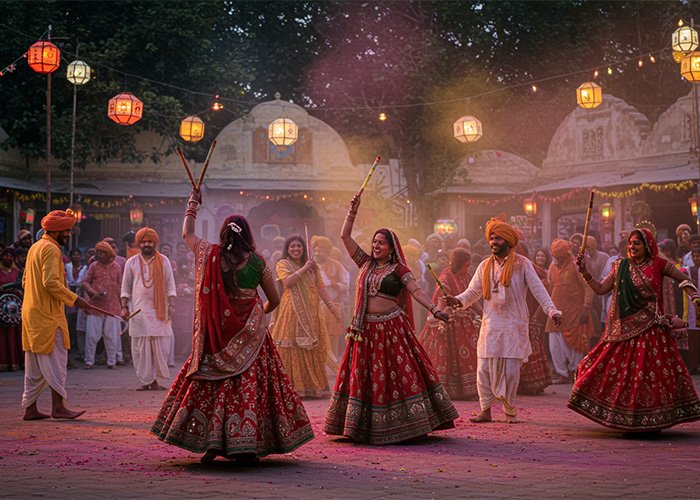
Gujarat – Dhulandi & Holla Mohalla
People celebrate with color fights, dandiya dance, and special sweets like gujiya and thandai.
Traditional Holi Foods & Sweets
No festival is complete without delicious food! Holi is known for its special festive treats:
- Gujiya – A crispy, sweet dumpling filled with khoya & dry fruits.
- Thandai – A refreshing drink made with milk, saffron, and dry fruits (sometimes mixed with bhang).
- Namak Pare & Shakar Pare – Crunchy snacks, perfect for munching during Holi celebrations.
- Dahi Bhalla – Soft lentil dumplings topped with curd, chutneys, and spices.
- Kesar Pista Lassi – A cooling yogurt drink to beat the Holi heat.
- Puran Poli (Maharashtra) & Malpua (Rajasthan & UP) – Sweet delicacies enjoyed across India.
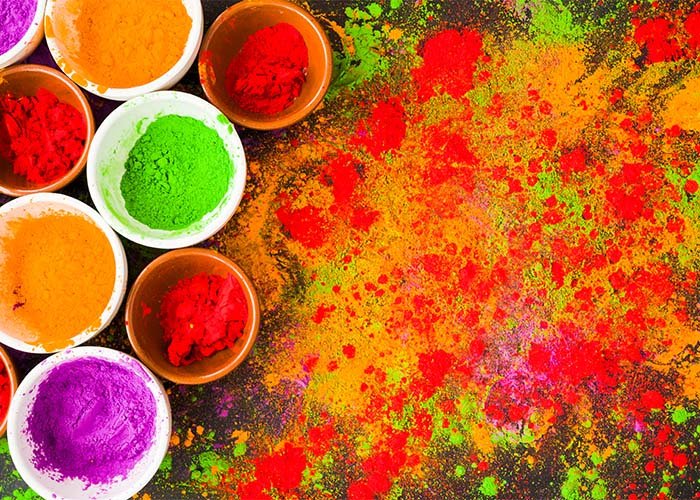
Ranga Panchami
Date: Wednesday, March 19, 2025
According to the Purnimanta Hindu calendar, Krishna Paksha Panchami of Chaitra month is observed as Ranga Panchami. In some regions of India, Holi festivities extend to Ranga Panchami, where people joyfully play with colors. Traditionally, this festival is celebrated five days after Holi, marking the culmination of Holi celebrations, especially in temples of Mathura and Vrindavan.
Ranga Panchami holds great significance in Madhya Pradesh, particularly in Ujjain, where grand processions of Huriyares (Holi revelers) take to the streets. In a unique tradition, fragrant colors are sprayed through large pipes by municipal vehicles, filling the air with divine hues.
Also known as Krishna Panchami and Dev Panchami, this festival commemorates Lord Krishna’s divine play of colors with Shri Radha Rani. On this auspicious day, temples across India organize Rangotsava, devotional tableaux, and cultural programs, celebrating the spirit of Bhakti and divine love.
Holi Festival - Frequently Asked Questions
When is Holi 2025?
Holi 2025 will be celebrated on March 14, 2025, with Holika Dahan on March 13, 2025.
Why is Holika Dahan important?
It symbolizes the victory of good over evil, inspired by the story of Prahlad and Holika.
What are the best places to experience Holi in India?
Vrindavan, Barsana, Mathura, Udaipur, Anandpur Sahib, and Shantiniketan offer unique Holi experiences.
What precautions should be taken while playing Holi?
Use natural colors, protect your eyes and skin, and respect others’ consent while playing.
What is the spiritual meaning of Holi?
Holi signifies letting go of negativity and embracing positivity, just like nature welcomes spring.




